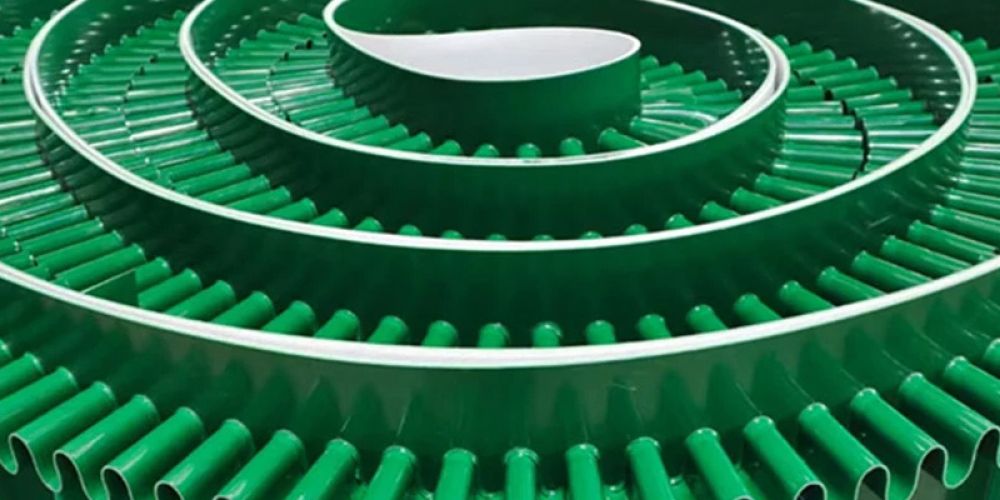
Industrial light conveyor belt is an efficient, flexible and economical equipment for material handling. It can also be called light conveyor belt or lightweight conveyor belt. The following is a detailed introduction:
(1)Material: Light conveyor belts are usually made of polymer materials, such as PVC (polyvinyl chloride) and PU (polyurethane). These materials give the conveyor belt good flexibility and wear resistance.
(2) Structure: Light conveyor belts have high flexibility settings, and the surface can be designed with various patterns, such as matte, grass pattern, diamond pattern, etc., to increase friction and adaptability. These designs help the conveyor belt to maintain stable operation in various working environments.
(3)Performance: Light conveyor belts have good acid and alkali resistance, oil resistance and high temperature resistance, and can adapt to a variety of harsh working environments. At the same time, it has good lateral stability and is not easy to deviate, ensuring the accuracy and stability of transportation.
Light conveyor belts are widely used in many industries because of their lightness, high efficiency and economy:
(1) Food industry: Food-grade PU and PVC conveyor belts are the first choice for the food industry. They are non-toxic, odorless and meet food safety standards. These conveyor belts can be used in food processing, packaging and transportation to ensure the hygiene and safety of food.
(2)Electronics industry: Various PVC antistatic conveyor belts are widely used in the assembly production lines of electronic manufacturing companies. These conveyor belts have good antistatic properties, which can prevent static electricity from damaging electronic components and ensure the stable operation of the production line.
(3) Wood processing industry: Light conveyor belts such as high adhesion conveyor belts (climbing belts) and sander belts (large square belts) play an important role in the wood processing industry. They can be used in the manufacturing of wooden doors, the production of floors and other artificial board processing processes to improve production efficiency.
(4) Photovoltaic industry: In the production of silicon wafers and photovoltaic glass processing of photovoltaic companies, special conveyor belts are needed to transport materials. These light conveyor belts have the characteristics of high precision, high stability and corrosion resistance, and can meet the special requirements of the photovoltaic industry for material transportation.
(5)Textile industry: Various PVC belts and synchronous belts are widely used in the textile industry. They can be used in the conveying, winding and cutting of textiles to improve the production efficiency and quality of textiles. In addition, light conveyor belts are also widely used in logistics, printing and packaging, metal sheet cutting and shearing, tinplate and other industries, providing strong support for material handling and transmission in these industries.
With the continuous improvement of industrial automation and intelligence, light conveyor belts are also constantly innovating and developing in design and manufacturing. In the future, light conveyor belts will pay more attention to lightweight, high strength, high precision and high efficiency design to meet the needs of various high-end equipment for transmission solutions. At the same time, the popularization of environmental protection concepts and the improvement of sustainable development requirements will also prompt the light conveyor belt industry to pay more attention to the research and development and application of environmental protection technologies to meet the market demand for green and low-carbon products.
In summary, industrial light conveyor belts, as an efficient, flexible and economical material handling equipment, play an important role in many industries. In the future, with the continuous advancement of technology and the continuous expansion of applications, light conveyor belts will continue to contribute their unique strength to industrial development.